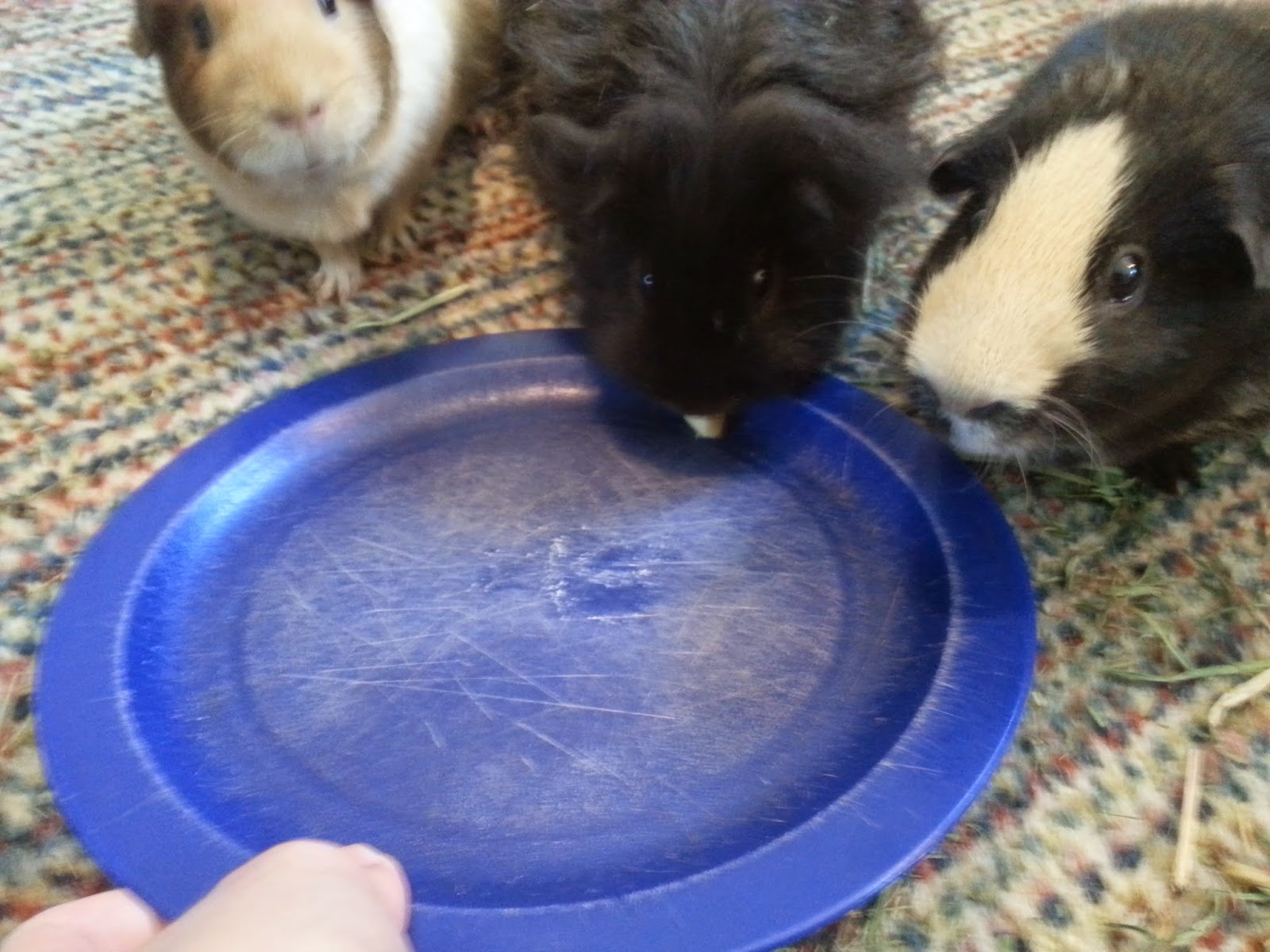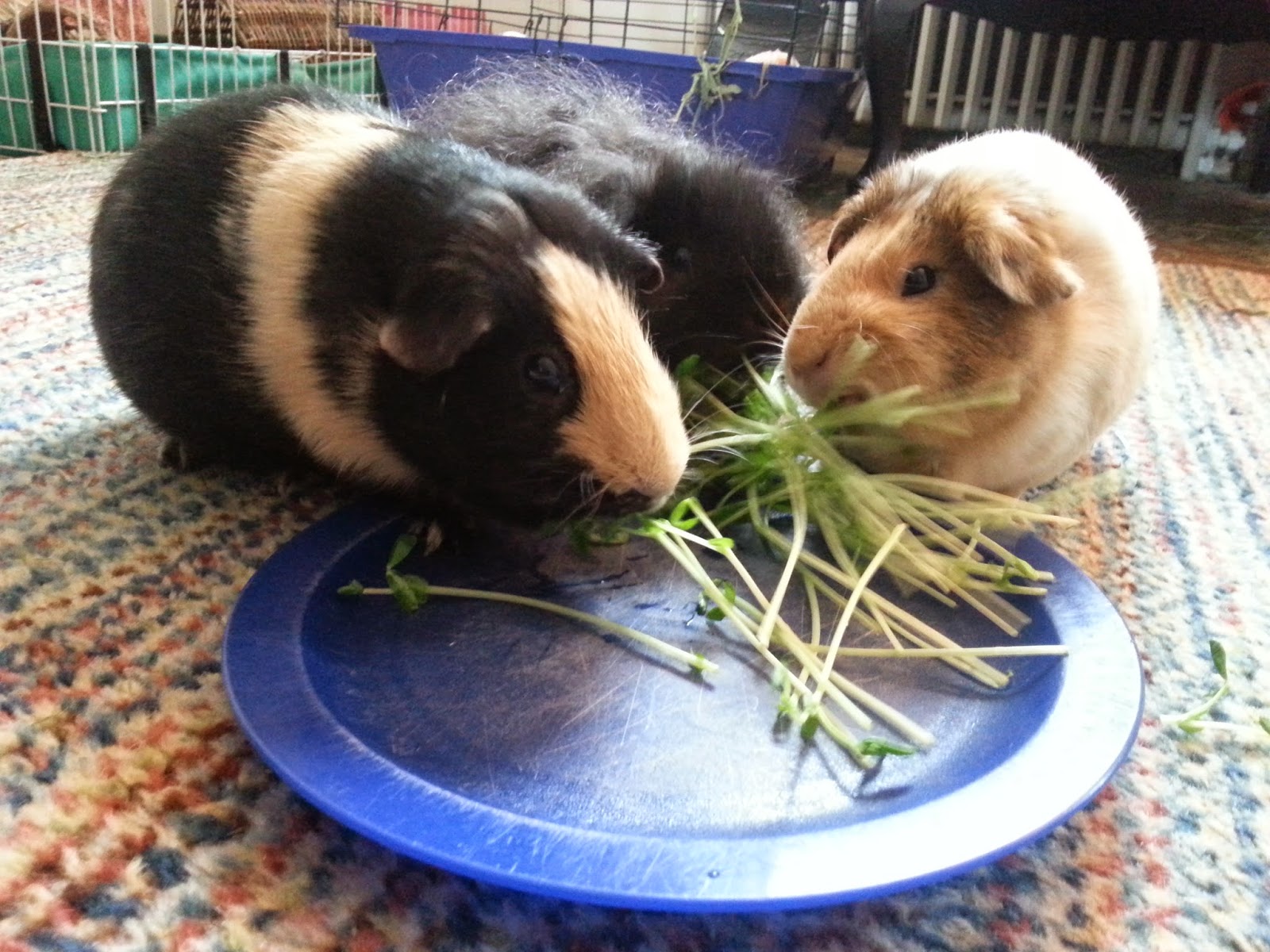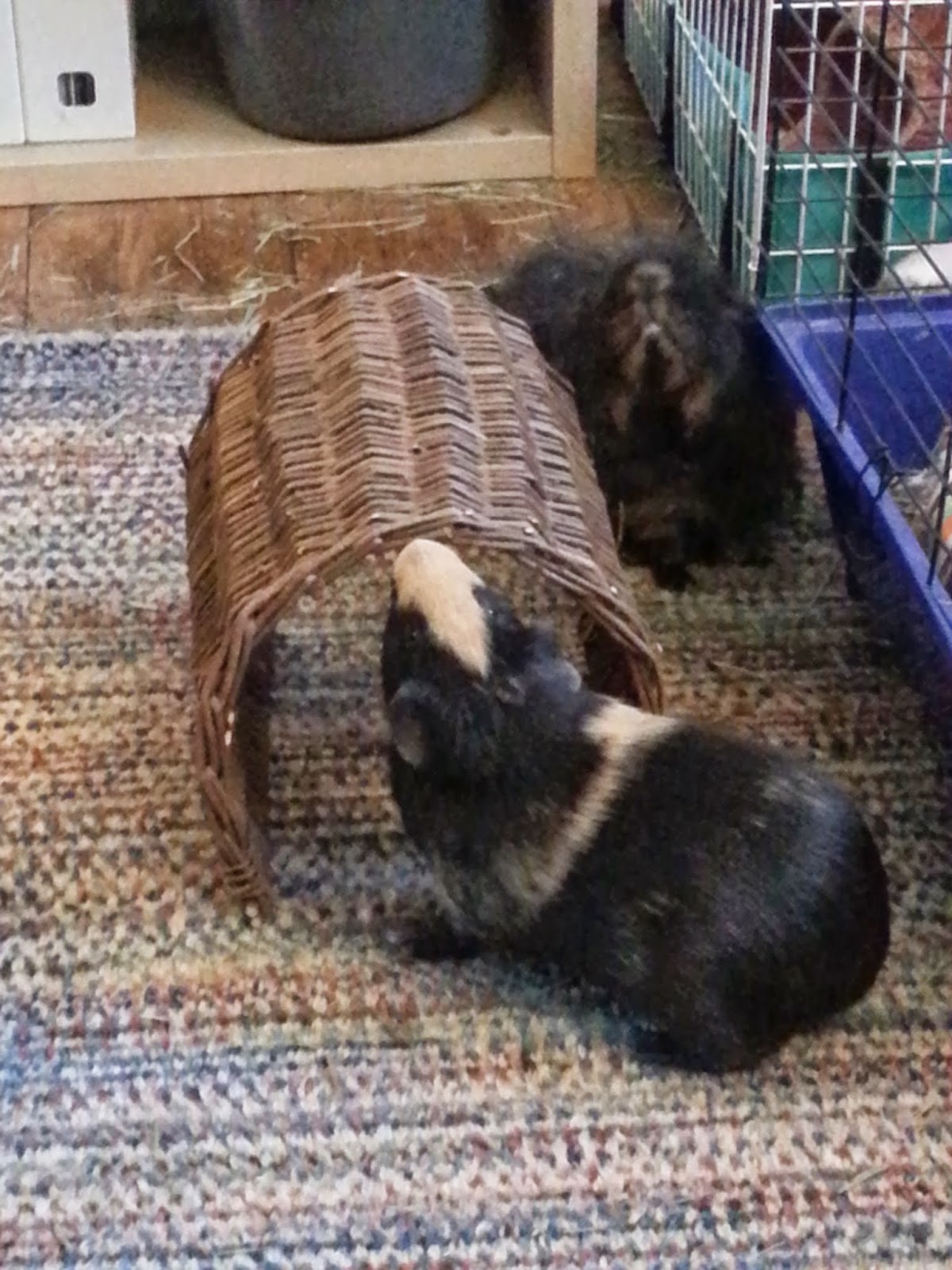Kelly B asks: "Can [guinea pigs] eat frozen raspberries?"
Answer: Good question, Kelly! Ordinarily,
we can eat fresh raspberries in
small (25 gram) portions almost daily. However, does freezing fruits and vegetables like raspberries change anything? As it turns out, this subject is a bit controversial. Here are a sampling of different opinions on this subject:
- One person who's studying chemistry says: "There is actually no harm in feeding your pets frozen vegetables."
- The diet expert at guineapigcages.com says: "Fresh veggies have high content of vitamins. When you use frozen veggies, the vitamin content doesn't hold up well and degrades and like someone else said, frozen veggies often are mushy after being thawed."
- A former moderator at guineapigcages.com says: "Feeding a GP frozen veggies can cause severe gastro intestinal upset which can have grave consequences... [including] severe illness, even death"
- Several people report feeding frozen fruits and vegetables to their guinea pigs, apparently without incident.
 |
| So frozen foods are either harmless, or can kill us? Hmm... |
Let's explore some of these issues.
Nutrition Loss
One of the major concerns some people have about freezing foods is that
they lose their nutritional value from being frozen.
Some scientific studies show that
this is not necessarily the case, however. In addition,
fruits and vegetables that are sold fresh in supermarkets out-of-season often lose a lot of their nutritional content during transport, while the freezing process can help stop this nutrient loss. On the other hand, during the blanching process (see below) that frozen produce usually go through,
about 25% of the vitamin C may be lost, and vitamin C is especially important to guinea pigs.
Freezing Processes Changing the Chemical Structure of Foods
Another concern that some people have is the
loss of natural enzymes in frozen fruits and vegetables, which make them difficult for herbivores like guinea pigs to digest. According to the
Food Safety team at the University of Minnesota: "Fresh produce contains chemical compounds called enzymes which cause the loss of color, loss of nutrients, flavor changes, and color changes in frozen fruits and vegetables. These enzymes must be inactivated to prevent such reactions from taking place. Enzymes in vegetables are inactivated by the blanching process. Blanching is the exposure of the vegetables to boiling water or steam for a brief period of time. The vegetable must then be rapidly cooled in ice water to prevent it from cooking." (This process is more common for vegetables than fruits. Fruit are
often treated with a chemical called ascorbic acid to destroy the enzymes that cause browning.)
Some people have asked about freezing the vegetables themselves in order to avoid the blanching used in commercially frozen vegetables. However,
according to the former moderator at guineapigcages.com, "It's not just heat that cooks fruits and veggies, freezing does it too. It breaks down the cellular make-up and kills the good live enzymes. Essentially, freezing 'cooks' food too."
Bacteria
Some people also have concerns about
bacteria from frozen foods. However, a
ccording to someone studying chemistry, the danger is no greater than that of fresh foods.
Freezing does not kill bacteria on fruits and vegetables; it only keeps them from multiplying. Therefore, frozen vegetables will be about as safe to eat as they were at the time they were frozen. Whether you buy frozen or fresh, you should always be selective about your produce.
Known Safe Frozen Foods
Watermelon and cantaloupe rinds are
safe for guinea pigs to eat frozen, according to the diet expert at guineapigcages.com. We haven't come across an explanation as to why these are safe while other frozen foods are supposedly not, however.
Conclusion
Frozen fruits and vegetables can actually have certain nutritional advantages in certain circumstances, although they tend to lose their vitamin C, which is one of the most important nutrients for us. In addition, commercially frozen vegetables are usually blanched and/or have preservatives added, and the freezing process itself can alter the contents in ways that some have raised concerns about. We would like to see some more evidence before we believe
the claim that frozen fruits and veggies can cause "severe illness, even death," given that we haven't yet come across a single case where a guinea pig's GI tract was disrupted from eating thawed frozen foods. On the other hand, why risk it if fresh fruits and vegetables are readily available? Just stick to fresh produce, and perhaps some frozen watermelon and cantaloupe rinds if your piggy wants a cool treat as the weather warms up.
Let us know if you have any additional information on this topic, and keep those questions coming!


















